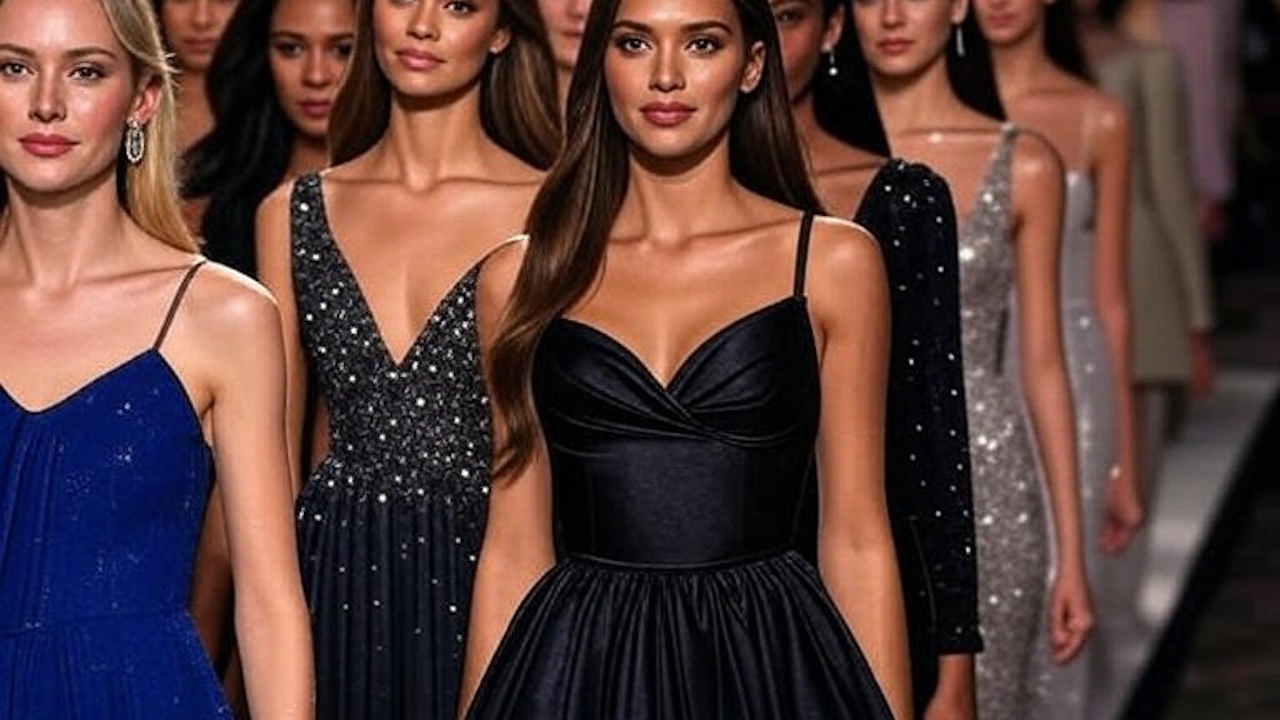Fashion Week, a whirlwind of creativity, innovation, and star power, continues to evolve at an unprecedented pace. In an era dominated by instantaneous digital sharing, keeping up with every runway moment, celebrity sighting, and emerging trend can feel like a full-time job. This recap distills the essence of recent fashion weeks, offering a quick glimpse into the most impactful designs, cultural statements, and shifts in the industry.
Key Trends Dominating the Runways
Recent fashion weeks have showcased a fascinating blend of established aesthetics and fresh perspectives. We’ve seen a continued emphasis on voluminous silhouettes, with designers pushing the boundaries of shape and proportion, particularly in sleeves and shoulders. Think dramatic drapes and exaggerated forms that create a powerful visual statement.
Sheer fabrics continue their strong presence, offering a delicate yet impactful element to collections. From ethereal tulle dresses to sophisticated organza suits, transparency is being embraced in diverse ways, often paired with strategic layering or bold underpinnings.
The color palette has seen a shift towards rich, saturated tones, with deep crimson, vibrant pinks, and earthy indigos making notable appearances. While muted shades of matcha and pistachio are still present, there’s a clear move towards more impactful hues that demand attention.
Leather, a perennial favorite, was reimagined in head-to-toe ensembles and impeccably tailored pieces, showcasing its versatility and timeless appeal. Knitwear also took center stage, with luxurious, often skimpy, matching sets exuding a quiet luxury.
Perhaps most interestingly, there’s a strong resurgence of 90s-inspired mini lengths, providing a playful contrast to the prevalent maxi and voluminous styles. This nod to retro fashion highlights a cyclical nature of trends, but with a modern twist often incorporating sheer elements or unexpected cuts.
Notable Designers and Collections
The recent circuit saw both established houses delivering iconic moments and emerging talents making their mark. Chanel’s latest collection, designed by their in-house studio before the anticipated debut of Matthieu Blazy, presented a winter of elegance and comfort, often playing with proportions and classic house codes.
Giorgio Armani Privé explored the richness of the color black, demonstrating its spectrum of shades and possibilities through exquisite couture creations. Saint Laurent, under Anthony Vaccarello, focused on a singular silhouette, creating powerful and almost monolithic looks with innovative fabric constructions.
Burberry paid tribute to Amy Winehouse in their autumn/winter collection, a poignant and artistic homage that resonated with many. Simone Rocha continued to innovate with her signature dramatic tulle and corset dresses, notably unveiling a collaboration with Crocs featuring bedazzled elements.
Other designers like JW Anderson reiterated the enduring appeal of quiet luxury, while Molly Goddard drew inspiration from voluminous Balenciaga and Dior gowns of the 60s. The show from Maltese menswear brand Gagliardi brought a fresh take on elegance with soft silhouettes and Mediterranean-inspired colors for their Spring/Summer 2025 collection.
The Unhinged Moments and Celebrity Presence
Fashion Week is as much about the spectacle as it is about the clothes. Recent events have been no stranger to “unhinged” moments and high-profile celebrity appearances that generate significant buzz. From Cardi B showing up with a live raven to Kim Kardashian donning Liz Taylor’s actual diamonds, these moments highlight the theatricality and sheer star power that accompanies fashion’s biggest events. Channing Tatum’s presence at Versace’s SS25 presentation in Milan also made headlines, reflecting the growing intersection of Hollywood and high fashion.
Social Media’s Transformative Power
The landscape of Fashion Week has been irrevocably altered by social media. Platforms like Instagram and TikTok have democratized access, transforming what was once an exclusive industry event into a global spectacle accessible to anyone with a smartphone. This has led to:
- Accelerated Trend Cycles: Trends now emerge and fade with unprecedented speed, driven by viral content and real-time interactions. What’s seen on the runway one day can be influencing street style and fast fashion iterations almost immediately.
- Democratization of Fashion: Social media has opened the doors to a wider array of voices and styles. Influencers and everyday fashion enthusiasts now play a crucial role in shaping trends and consumer behavior, previously a domain solely occupied by editors and buyers.
- Direct-to-Consumer Engagement: Brands can now connect directly with their audience, receiving instant feedback and leveraging platforms for targeted marketing and direct sales. This real-time interaction helps brands adapt strategies and product offerings more quickly.
- Emphasis on Virality: Beyond simply showcasing clothes, designers and brands are increasingly thinking about what will “go viral” online. This can lead to more audacious stunts, unexpected collaborations, and visually striking presentations designed for maximum digital impact.
The ability to live stream shows, share backstage glimpses, and engage with audiences in real time has made Fashion Week a truly immersive and interactive experience, fundamentally reshaping how we consume and participate in the world of fashion.

